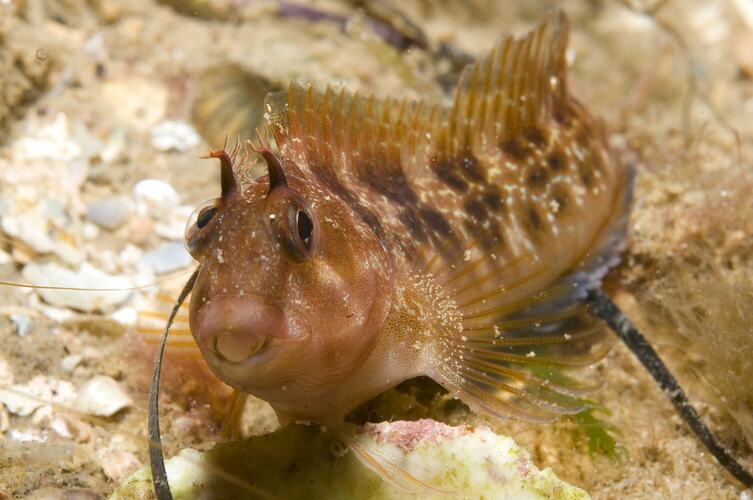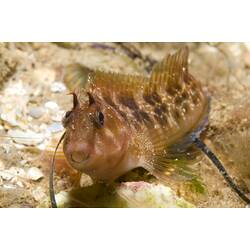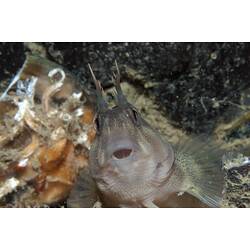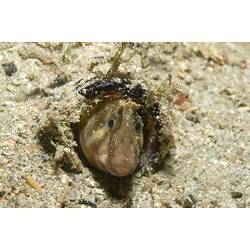General Description
Body slender, head profile steep, dorsal fin long-based; pelvic fins each reduced to a tiny spine and two rays; a fringed fleshy tentacle above each eye. Pale brownish to bluish-grey, covered in fine spots or stipples, and about 6 indistinct darker saddle-like markings above midline of body (males), or with indistinct saddles, each in a checkerboard pattern (females). Maximum total length 7 cm.
Biology
Tasmanian Blenny are common on shallow algal covered reefs and shelter under rocks in tidepools, in holes and crevices in shallow reefs, pylons, and in empty cans and bottles.
Distribution
South-eastern Australia.
Habitat
Rocky reefs, jetty pylons in bays and coastal waters, to depth of 10 m.
More Information
-
Animal Type
-
Animal SubType
-
Brief Id
Brownish to bluish-grey with a fringed tentacle above the eye; body densely covered in very fine spots or stipples, and about 6 indistinct darker saddle-like markings or indistinct saddles in a checkerboard pattern.
-
Habitats
-
Diet
Algae
-
Endemicity
-
Commercial
No
-
Conservation Statuses
CITES: Not listed, FFG Threatened List: Not listed, EPBC Act 1999: Not listed, IUCN Red List: Least Concern
-
Depths
Shore (0-1 m), Shallow (1-30 m)
-
Water Column Locations
On or near seafloor
-
Taxon Name
-
Scientific Author
(Richardson, 1842)
-
Common Name
Tasmanian Blenny
-
Kingdom
-
Phylum
-
Subphylum
-
Superclass
-
Class
-
Order
-
Family
-
Genus
-
Species Name
tasmanianus




